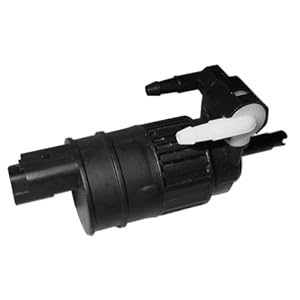made a camber measuring plumb-line
now to setup the level platform with a bucket of water and a long clear hose.
one end of clear hose taped to a stick used as the measuring probe
the other is submerged in the water. syphone water through hose till the level matches the bucket
place the car onto the level platform
now I adjust the tyre pressures till the height if the rims off the floor are all the same (full fuel tank & no driver or passenger weight cos i don't have any helpers).
start off all the tyres at 3bars cos thats how much it used to run when warm but this causes all the heights to be irratic due to different wall stiffness and tread depth between the tyres.
front left was the lowest while the rear tyre at 3bar were alot higher with the lighter rear end.
so i deflate the tyres till they match the front left tyre with the lowest height and the pressures are:
FR - 2.57bar
FL - 2.97bar
RR - 1.78bar
RL - 1.55bar
the turntable works so well. the handbrake is holding the rear wheels to the static floor but i could easily rock the front end side to side with ease
next is to center the rear axle. place the laser jig facing vertically on the rear wheel and measure the distance from the edge of the wheel arch, both sides are 30mm so no need to alter the panhard rod

to straighten the rear axle I point the lasers at the front jig at measure the distance from the middle of the front wheel.
initially the rear axle was showing 34mm on the left and 30mm on the right = rear axle was pointing 0.049deg slightly left.
extended the RH trailing arm till its pointing straight, both reading 32mm. I calculated the rear axle has a toe-in of 0.17067deg.
the rear camber measured 0.8deg rear left and 0.7deg rear right.
to secure the steering wheel, I engage the steering lock and apply pressure with zipties
next is to set the front camber.
initially even though both of the pillow tops are set at the same position (damper adjustment knob is 25mm from the edge of the strut hole), the actual wheel camber was 1.6deg front left and 0.6deg front right
(I suspect it might be caused by where the suspension strut bolts to the hub cos there's alot of available slack before the bolts are tightened which will alter both the hubs camber relative to the strut camber, abit like how camber bolts work but not intended)
I adjust the "damper knob to edge distance" till both wheels are 0deg camber and log the measured camber of each setting position:
LH camber for each damper knob position:
18mm = 0deg
28mm = 1deg
37mm = 1.8deg (can't go any further)
RH camber for each damper knob position:
7mm = 0deg
18mm = 1deg
26mm = 1.8deg
I've set both wheel at the maximum 1.8deg cos she tends to wear the front outer tread more
the camber adjustment top measures 650mm from the lower kingpin so I could calc any camber i need at the track using basic triganometry
now I place the lasers at the front and align the front wheels dead straight
after they're straight, I got dad to sit in the drivers seat to see if the extra offset weight affects the alignment, nope they all remain the same, gr8
k all done. thought I'd return the cold tyre pressures back up to 2.85bar rear/2.8bar front as I ran before.
on first test run she travels dead straight when the steerings straight and minimal LH pull at low speed on open level roads (housing street roads have huge camber that obviously makes the car drift left) but at motorway speed she still drifts left abit (motorways have alot of camber too?)
I think that having the left & right tyres at the same pressure creating a mismatched rim-to-floor height (front right & rear left tyres have stiffer walls & is higher than the others apparantly) is causing the alignment to drift slightly left.
so I set the warm tyre pressures back to the values I set before alignment, where all 4 wheel rims will be equal distance off the floor, and the high speed drift is so much less or vanished now (depending on the camber of the road)
so i believe that's it, goal achieved
























